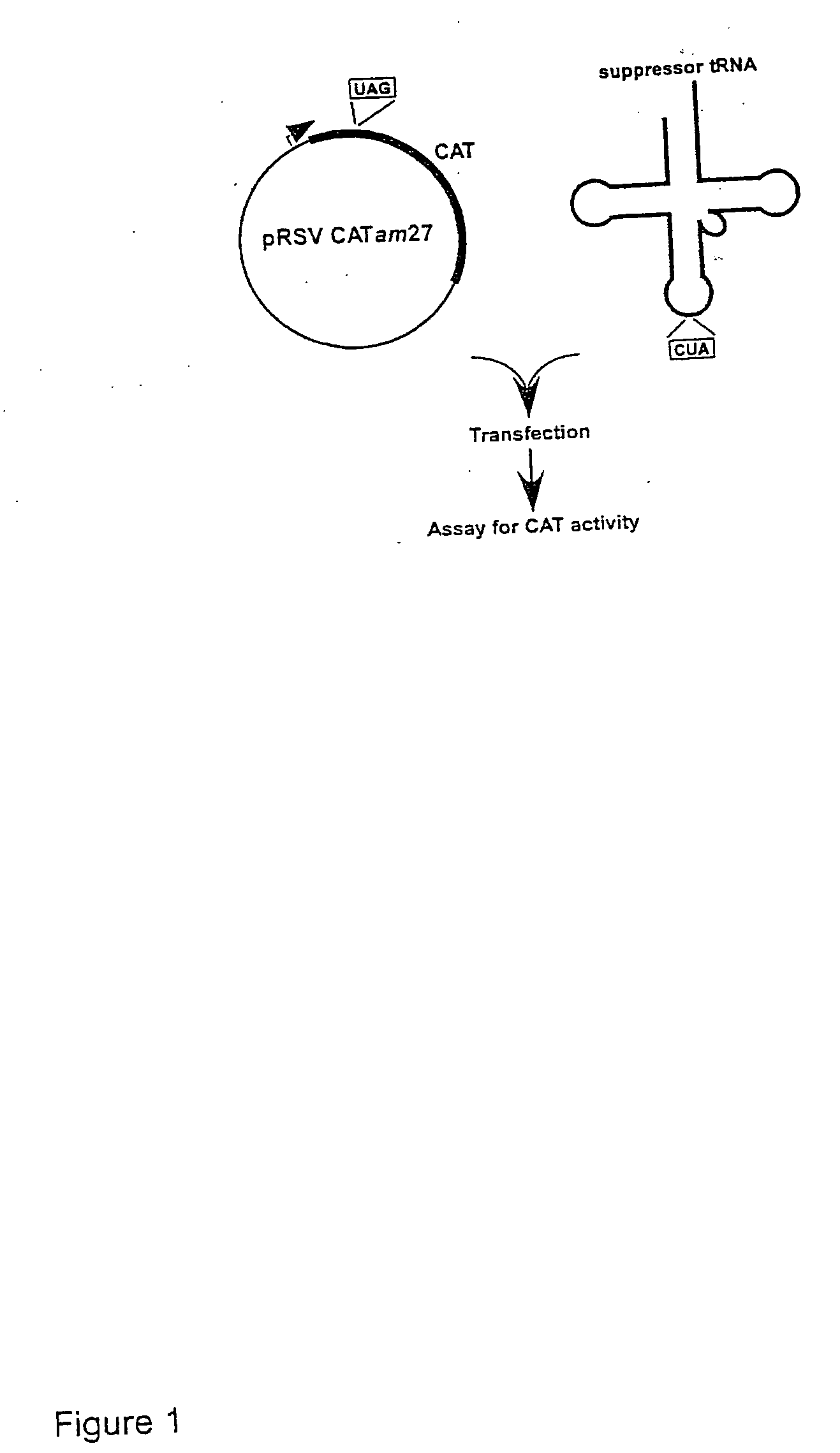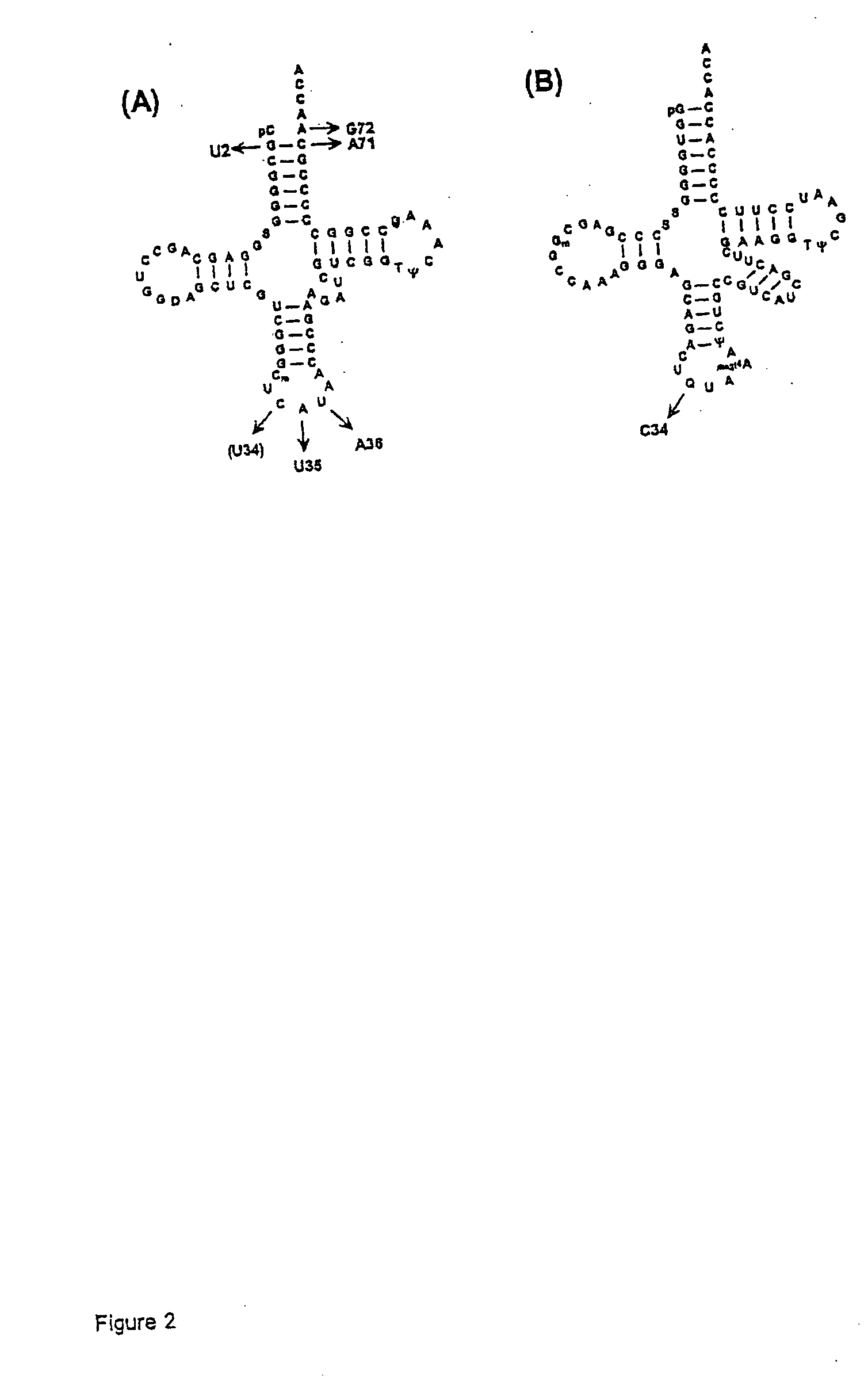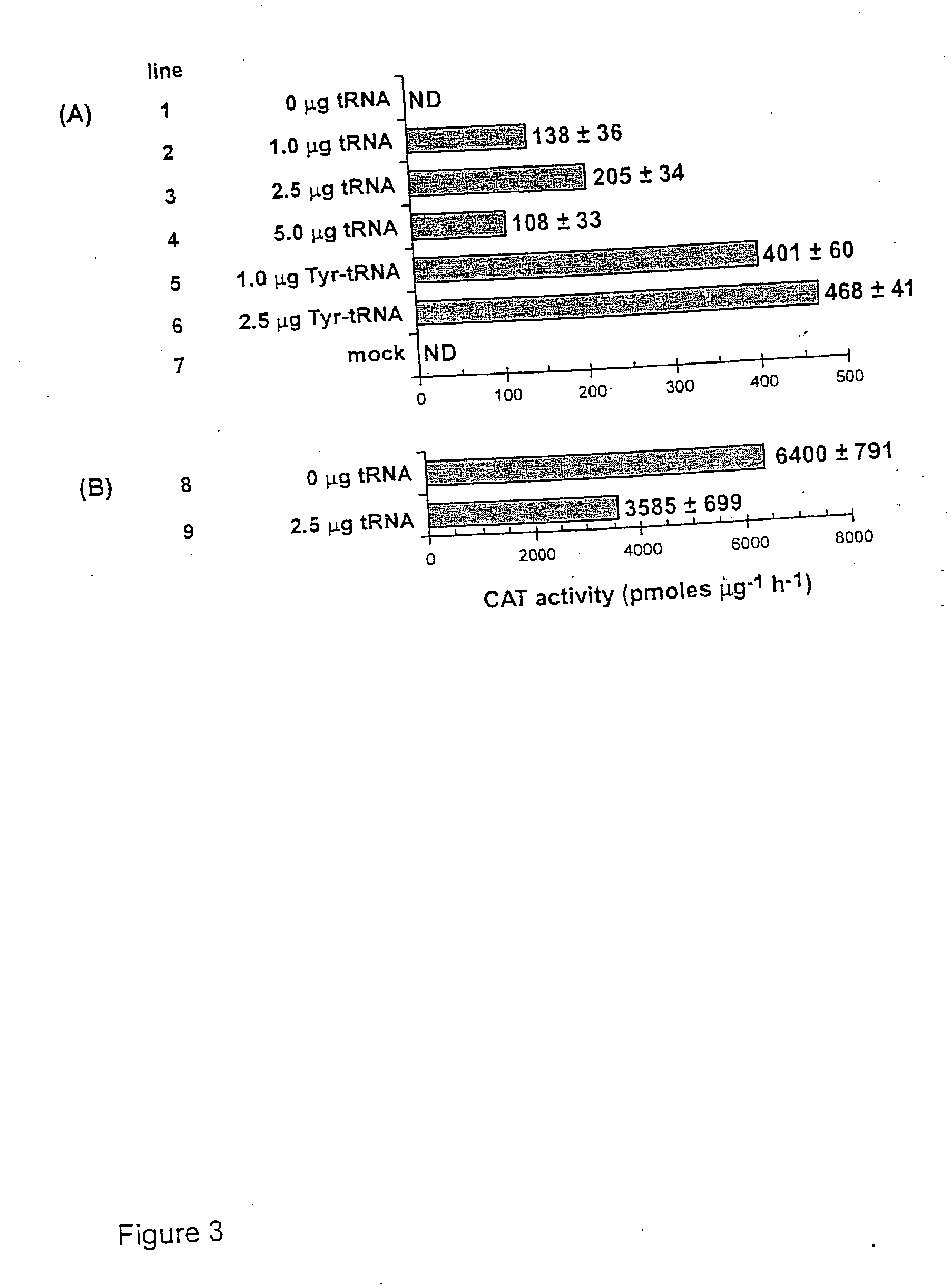Orthogonal suppressor tRNAs and aminoacyl-tRNA synthetases and uses thereof
a technology of orthogonal suppressor and aminoacyltrna, which is applied in the field of orthogonal suppressor trnas and aminoacyltrna synthetases, can solve the problems of low protein yield of many techniques available for introducing unnatural amino acids into proteins, laborious synthetic technologies, and low protein yield of many techniques
- Summary
- Abstract
- Description
- Claims
- Application Information
AI Technical Summary
Problems solved by technology
Method used
Image
Examples
example 1
Import of Amber and Ochre Suppressor tRNAs into Mammalian Cells
[0139] Materials and Methods
[0140] General. Standard genetic techniques were used for cloning (Sambrook et al. Molecular Cloning: A Laboratory Manual, Cold Spring Harbor Press, Cold Spring Harbor, N.Y., Second Edition, 1989), E. coli strains DH5α (Hanahan J Mol. Biol. 166:557, 1983) and XL1-Blue (Bullock et al., BioTechniques 5:376, 1987) were used for plasmid propagation and isolation. For transfection of mammalian cells, plasmid DNAs were purified using an EndoFree Plasmid Maxi kit (Qiagen). Oligonucleotides were from Genset Oligos and radiochemicals were from New England Nuclear.
[0141] Plasmids carrying reporter genes. pRSVCAT and pRSVCATam27 and pRSVCAToc27, carrying amber and ochre mutations, respectively, at codon 27 of the chloramphenicol acetyltransferase (CAT) gene, have been described previously (Capone et al., Mol. Cell. Biol. 6:3059, 1986).
[0142] Plasmids carrying suppressor tRNA genes. The plasmid pRSVCA...
example 2
Design of a Dual-Luciferase Reporter System and Isolation of HEK293 Cell Lines for Analysis of Amber and Ochre Suppression in Mammalian Cells.
[0158] Materials and Methods
[0159] Reporter system based on a dual-luciferase fusion protein. A dual-luciferase reporter system was developed based on firefly luciferase (FLuc) and Renilla luciferase (RLuc). The 1.65 kb FLuc gene from pSP-luc+NF (Promega) and the SV40 late poly(A) signal from pGL3-Basic (Promega) were inserted into pBluescript II (SK+) (Stratagene). The 0.95 kb RLuc gene was amplified from pRL-Null (Promega) by PCR using primers designed to introduce a BstEII site in place of the termination codon. This modified RLuc gene was then inserted upstream of the FLuc gene to form the 2.6 kb RLucFLuc fusion (Bennett, M., and Schaack, J., J. Gene Med. 5, 723-732, 2003). Site-directed mutagenesis was used to replace the codon for tyrosine 70 of the wild type FLuc gene with an amber or ochre termination codon to generate RLucFLuc (am70...
example 3
Concomitant Suppression of Amber and Ochre Codons in COS1 Cells Cotransfected with pRLucFLuc Plasmid and Amber and Ochre Suppressor tRNAs Derived from E. coli Initiator tRNAfMet
[0163] Materials and Methods
[0164] Plasmids carrying suppressor tRNA genes. Plasmids pRSVCAT / trnfM U2:A71 1U35A36 / G72 (Lee, C. P., and RajBhandary, U. L., Proc. Natl. Acad. Sci. USA 88, 11378-11382, 1991) and pRSVCAT / trnfM U2:A71 / U34U35A36 / G72 (described above and in Köhrer, C., et al., Proc. Natl. Acad. Sci. USA 98, 14310-14315, 2001) contain the genes for amber (fMam) and ochre (fMoc) suppressor tRNAs derived from the E. coli tRNA2fMet. The plasmid pCDNA1 (Invitrogen) contains the gene for the supF amber suppressor derived from E. coli tRNA1Tyr (Goodman, H. M., et al., Nature (London) 217, 1019-1024, 1968).
[0165] Purification of suppressor tRNAs. Overexpression and purification of the fMam, fMoc and the supF suppressor tRNAs were performed as described in Example 1. The purity of fMam, fMoc and the supF ...
PUM
| Property | Measurement | Unit |
|---|---|---|
| Fraction | aaaaa | aaaaa |
| Fraction | aaaaa | aaaaa |
| Fraction | aaaaa | aaaaa |
Abstract
Description
Claims
Application Information
 Login to view more
Login to view more - R&D Engineer
- R&D Manager
- IP Professional
- Industry Leading Data Capabilities
- Powerful AI technology
- Patent DNA Extraction
Browse by: Latest US Patents, China's latest patents, Technical Efficacy Thesaurus, Application Domain, Technology Topic.
© 2024 PatSnap. All rights reserved.Legal|Privacy policy|Modern Slavery Act Transparency Statement|Sitemap



